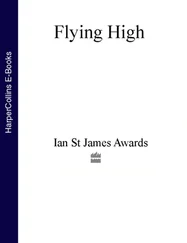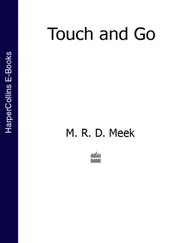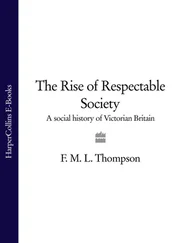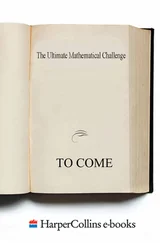Page-references to The Silmarillion are to the hardback edition; to The Lord of the Rings by title of the volume, book, and chapter.
There follow now primarily bibliographical notes on the individual pieces.
PART ONE
I
Of Tuor and his Coming to Gondolin
My father said more than once that ‘The Fall of Gondolin’ was the first of the tales of the First Age to be composed, and there is no evidence to set against his recollection. In a letter of 1964 he declared that he wrote it ‘ “out of my head” during sick-leave from the army in 1917’, and at other times he gave the date as 1916 or 1916 – 17. In a letter to me written in 1944 he said: ‘I first began to write [ The Silmarillion ] in army huts, crowded, filled with the noise of gramophones’: and indeed some lines of verse in which appear the Seven Names of Gondolin are scribbled on the back of a piece of paper setting out ‘the chain of responsibility in a battalion’. The earliest manuscript is still in existence, filling two small school exercise-books; it was written rapidly in pencil, and then, for much of its course, overlaid with writing in ink, and heavily emended. On the basis of this text my mother, apparently in 1917, wrote out a fair copy; but this in turn was further substantially emended, at some time that I cannot determine, but probably in 1919 – 20, when my father was in Oxford on the staff of the then still uncompleted Dictionary. In the spring of 1920 he was invited to read a paper to the Essay Club of his college (Exeter); and he read ‘The Fall of Gondolin’. The notes of what he intended to say by way of introduction to his ‘essay’ still survive. In these he apologised for not having been able to produce a critical paper, and went on: ‘Therefore I must read something already written, and in desperation I have fallen back on this Tale. It has of course never seen the light before.... A complete cycle of events in an Elfinesse of my own imagining has for some time past grown up (rather, has been constructed) in my mind. Some of the episodes have been scribbled down....
This tale is not the best of them, but it is the only one that has so far been revised at all and that, insufficient as that revision has been, I dare read aloud.’
The tale of Tuor and the Exiles of Gondolin (as ‘The Fall of Gondolin’ is entitled in the early MSS) remained untouched for many years, though my father at some stage, probably between 1926 and 1930, wrote a brief, compressed version of the story to stand as part of The Silmarillion (a title which, incidentally, first appeared in his letter to The Observer of 20 February 1938); and this was changed subsequently to bring it into harmony with altered conceptions in other parts of the book. Much later he began work on an entirely refashioned account, entitled ‘Of Tuor and the Fall of Gondolin’. It seems very likely that this was written in 1951, when The Lord of the Rings was finished but its publication doubtful. Deeply changed in style and bearings, yet retaining many of the essentials of the story written in his youth, ‘Of Tuor and the Fall of Gondolin’ would have given in fine detail the whole legend that constitutes the brief 23rd chapter of the published Silmarillion ; but, grievously, he went no further than the coming of Tuor and Voronwë to the last gate and Tuor’s sight of Gondolin across the plain of Tumladen. To his reasons for abandoning it there is no clue.
This is the text that is given here. To avoid confusion I have retitled it ‘Of Tuor and his Coming to Gondolin’, since it tells nothing of the fall of the city. As always with my father’s writings there are variant readings, and in one short section (the approach to and passage of the river Sirion by Tuor and Voronwë) several competing forms; some minor editorial work has therefore been necessary.
It is thus the remarkable fact that the only full account that my father ever wrote of the story of Tuor’s sojourn in Gondolin, his union with Idril Celebrindal, the birth of Ea¨rendil, the treachery of Maeglin, the sack of the city, and the escape of the fugitives – a story that was a central element in his imagination of the First Age – was the narrative composed in his youth. There is no question, however, that that (most remarkable) narrative is not suitable for inclusion in this book. It is written in the extreme archaistic style that my father employed at that time, and it inevitably embodies conceptions out of keeping with the world of The Lord of the Rings and The Silmarillion in its published form. It belongs with the rest of the earliest phase of the mythology, ‘the Book of Lost Tales’: itself a very substantial work, of the utmost interest to one concerned with the origins of Middle-earth, but requiring to be presented in a lengthy and complex study if at all.
II
The Tale of the Children of Húrin
The development of the legend of Túrin Turambar is in some respects the most tangled and complex of all the narrative elements in the story of the First Age. Like the tale of Tuor and the Fall of Gondolin it goes back to the very beginnings, and is extant in an early prose narrative (one of the ‘Lost Tales’) and in a long, unfinished poem in alliterative verse. But whereas the later ‘long version’ of Tuor never proceeded very far, my father carried the later ‘long version’ of Túrin much nearer completion. This is called Narn i Hîn Húrin ; and this is the narrative that is given in the present book.
There are howevergreat differences in the course of the long Narn in the degree to which the narrative approaches a perfected or final form. The concluding section (from The Return of Túrin to Dor-lómin to The Death of Túrin) has undergone only marginal editorial alteration; while the first section (to the end of Túrin in Doriath) required a good deal of revision and selection, and in some places some slight compression, the original texts being scrappy and disconnected. But the central section of the narrative (Túrin among the outlaws, Mîm the Petty-dwarf, the land of Dor-Cúarthol, the death of Beleg at Túrin’s hand, and Túrin’s life in Nargothrond) constituted a much more difficult editorial problem. The Narn is here at its least finished, and in places diminishes to outlines of possible turns in the story. My father was still evolving this part when he ceased to work on it; and the shorter version for The Silmarillion was to wait on the final development of the Narn . In preparing the text of The Silmarillion for publication I derived, by necessity, much of this section of the tale of Túrin from these very materials, which are of quite extraordinary complexity in their variety and interrelations.
For the first part of this central section, as far as the beginning of Túrin’s sojourn in Mîm’s dwelling on Amon Rûdh, I have contrived a narrative, in scale commensurate with other parts of the Narn , out of the existing materials (with one gap, see p. 124and note 12); but from that point onwards (see p. 135) until Túrin’s coming to Ivrin after the fall of Nargothrond I have found it unprofitable to attempt it. The gaps in the Narn are here too large, and could only be filled from the published text of The Silmarillion ; but in an Appendix (pp. 193ff.) I have cited isolated fragments from this part of the projected larger narrative.
In the third section of the Narn (beginning with The Return of Túrin to Dor-lómin) a comparison with The Silmarillion (pp. 215 – 26) will show many close correspondences, and even identities of wording; while in the first section there are two extended passages that I have excluded from the present text (see p. 76and note 1, and p. 86and note 2), since they are close variants of passages that appear elsewhere and are included in the published Silmarillion . This overlapping and interrelation between one work and another may be explained in different ways, from different points of view. My father delighted in re-telling on different scales; but some parts did not call for more extended treatment in a larger version, and there was no need to rephrase for the sake of it. Again, when all was still fluid and the final organisation of the distinct narratives still a long way off, the same passage might be experimentally placed in either. But an explanation can be found at a different level. Legends like that of Túrin Turambar had been given a particular poetic form long ago – in this case, the Narn i Hîn Húrin of the poet Dírhavel – and phrases, or even whole passages, from it (especially at moments of great rhetorical intensity, such as Túrin’s address to his sword before his death) would be preserved intact by those who afterwards made condensations of the history of the Elder Days (as The Silmarillion is conceived to be).
Читать дальше












